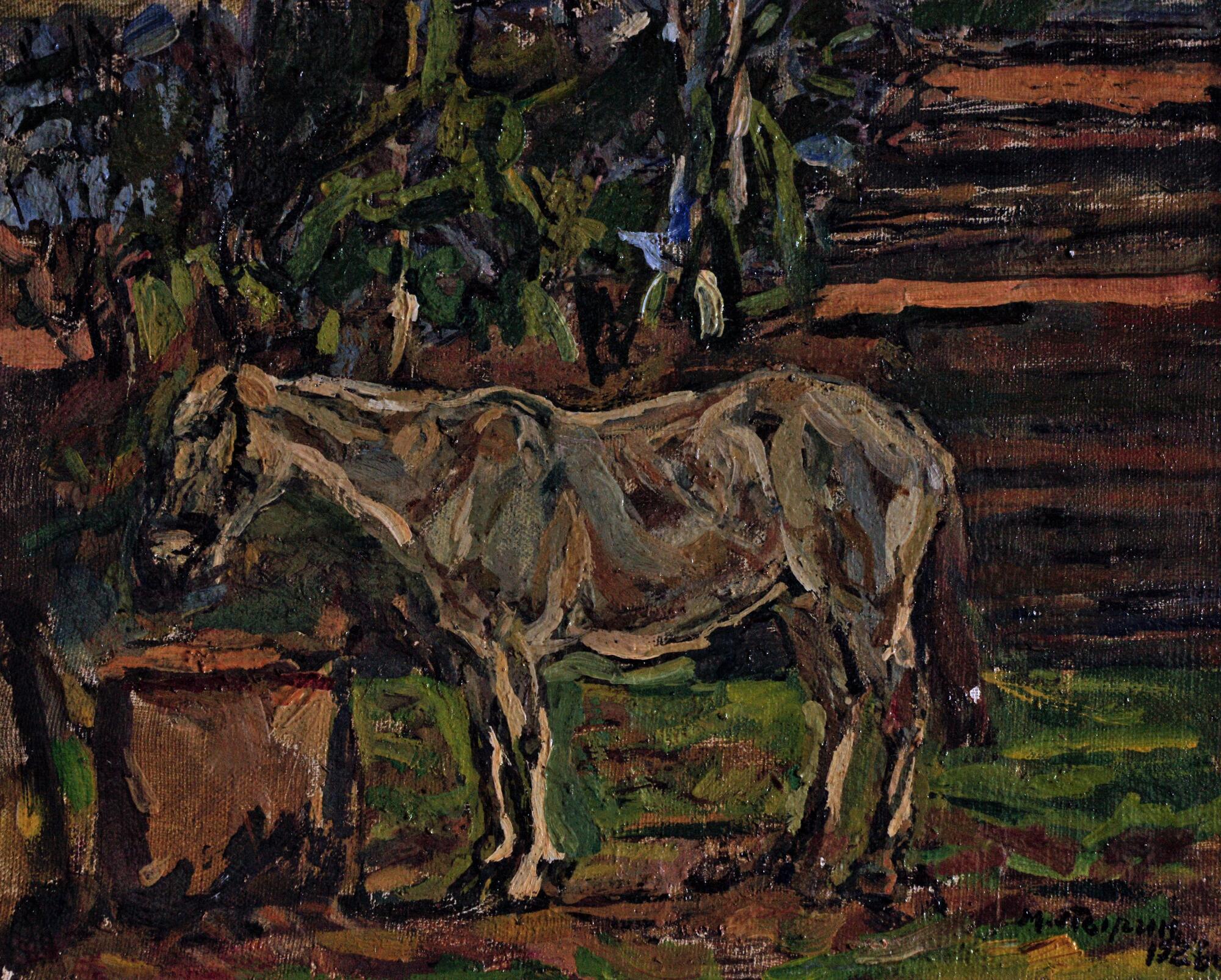Mikhail Pyrin was born in 1874 in the village of Chentsovo, the Yaroslavl Governorate, into a poor peasant family with many children. His parents noticed early on that the son was good at drawing and despite financial difficulties sent him to the training courses to the artist, the member of the Wanderers group [Peredvizhniki], Ivan Bogdanov. In 1892, Pyrin passed his entrance exams to the Moscow School of Painting, Sculpture and Architecture. There, his teachers were painters Sergey Korovin, Vladimir Makovsky, Illarion Pryanishnikov, Konstantin Savitsky, and Valentin Serov.
In 1899, Pyrin’s work “Visiting” was counted by the school as his graduation work and awarded him the title of artist. The diplomat was awarded a trip abroad: in the museums of Germany, Italy and France, Mikhail Pyrin studied the heritage of European masters and also became acquainted with modern Western art. In Paris for some time he attended classes at the Julian Academy. From this trip the artist brought a whole series of works.
In 1909, Pyrin joined the “Union of Russian Artists”. It was during these years that the inimitable “Pyrin”s” style of painting was formed — a small, but also vigorous stroke, which combined both stroke and color.
One of the examples of “Pyrin”s” style of painting is “Landscape with a Horse”. It is housed in the collection of the Shebekino Museum. For the canvas Pyrin chose bright, saturated colors: green, yellow, blue. In the center of the canvas he placed a white horse, which stands sideways to the viewer. Around, emerald grass, bright blue sky can be seen through the foliage. The landscape seems to be bursting with sunshine, bright and cheerful.
The painting by Mikhail Pyrin is a model of Russian impressionism, which combines an abstract depiction of nature with poetic national images. The horse is a symbol of simple, peasant Russia, to which the artist himself belonged. Despite the fact that the work resembles a sketch and the strokes seem messy, the artist painted the canvas a long while with painstaking details: Pyrin observed the rural landscape, carefully studying the details in order to convey them accurately on the canvas.
Now the artist’s works are housed in the Tretyakov Gallery, the Ivanovo Regional Art Museum, in museums of Nizhny Novgorod, Perm, Luhansk, Kursk, as well as in private collections.
In 1899, Pyrin’s work “Visiting” was counted by the school as his graduation work and awarded him the title of artist. The diplomat was awarded a trip abroad: in the museums of Germany, Italy and France, Mikhail Pyrin studied the heritage of European masters and also became acquainted with modern Western art. In Paris for some time he attended classes at the Julian Academy. From this trip the artist brought a whole series of works.
In 1909, Pyrin joined the “Union of Russian Artists”. It was during these years that the inimitable “Pyrin”s” style of painting was formed — a small, but also vigorous stroke, which combined both stroke and color.
One of the examples of “Pyrin”s” style of painting is “Landscape with a Horse”. It is housed in the collection of the Shebekino Museum. For the canvas Pyrin chose bright, saturated colors: green, yellow, blue. In the center of the canvas he placed a white horse, which stands sideways to the viewer. Around, emerald grass, bright blue sky can be seen through the foliage. The landscape seems to be bursting with sunshine, bright and cheerful.
The painting by Mikhail Pyrin is a model of Russian impressionism, which combines an abstract depiction of nature with poetic national images. The horse is a symbol of simple, peasant Russia, to which the artist himself belonged. Despite the fact that the work resembles a sketch and the strokes seem messy, the artist painted the canvas a long while with painstaking details: Pyrin observed the rural landscape, carefully studying the details in order to convey them accurately on the canvas.
Now the artist’s works are housed in the Tretyakov Gallery, the Ivanovo Regional Art Museum, in museums of Nizhny Novgorod, Perm, Luhansk, Kursk, as well as in private collections.



